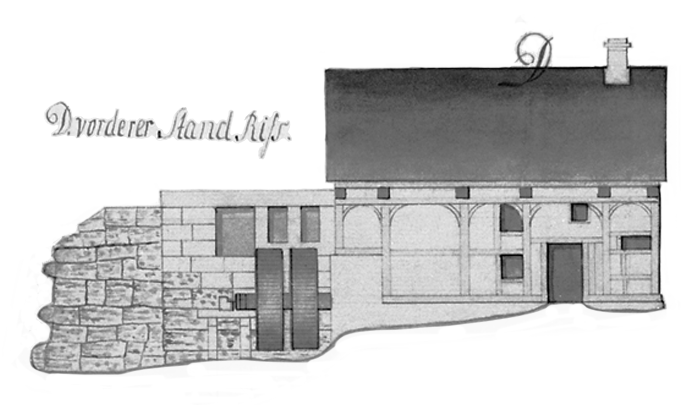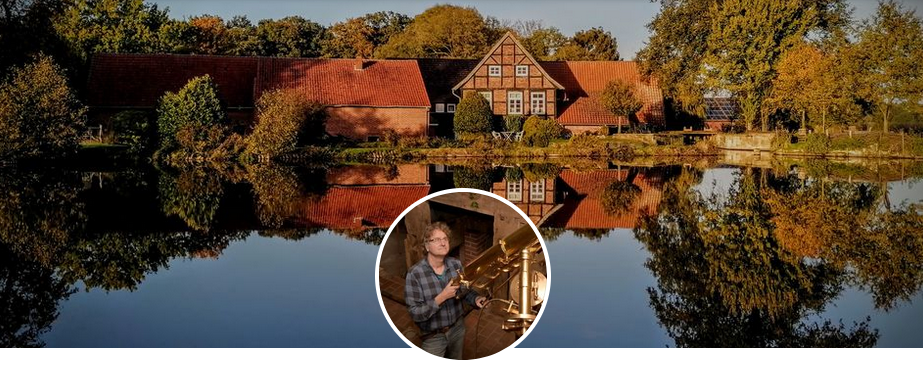The history of the mill
For the building - first mentioned in 1532 as the Neddermühle in connection with the Premonstratensian monastery on Heiligenberg - a massive foundation was laid in 1749, and the mill house was also repaired. In 1990 restorations on the bike and the water inlet followed. Until 1996, three tons of grain were ground there every day. And in 2000 the house was externally renovated. "We are of course lucky that the mill is in such good condition," says Bea Tilanus, who was already active as a volunteer miller in the Netherlands. The mill technology was completely preserved, electricity generation was possible.

Br.-Vilsen - The Bruchmühlen watermill could be over 200 years older than many currently assume. For most of them, 1532 is the year in which the watermill was first mentioned in a document. Hartmut Bösche - born in Martfeld and has always been interested in the home history of the Bruchhausen-Vilsen community - thinks that a small mistake in the so-called Hoyaer Urkundenbuch caused a great misunderstanding.
In 1350 the plague raced through Europe. Twenty years later, the Counts of Hoya, Gerhard and Otto, counted their remaining subjects. The long list of names - recorded on the so-called roll 3 consisting of paper strips sewn together - was retained. It can be found in the Hanover State Archives, says Hartmut Bösche. This list from around 1370 also mentions the operators of two mills: "Curd de mullere van dem hilghenberghe" and "Johann de mullere vam hilghenbergh". The latter had subsequently been crossed out by another hand - together with others in their name. And that is precisely the cause of the misunderstanding.
When the list was transferred to the Hoya document book, the crossed-out names were not taken over, so that only Müller Curd appears in it. Since then, this has been assigned to the monastery mill on the Heiligenberg. However, the Hoya document book is often used as a source so that many local researchers today would assume that there was only one mill around 1370 that was also in operation.
For Hartmut Bösche, however, it is clear that both the monastery mill and the Bruchmühler watermill were already in operation in the 14th century. “Both mills, the Klostermühle and the Bruchmühle, certainly come from the quieter times before the plague, so they were built before 1350,” he says. The deletion of Johann affected his personal fate - for example through death - "but not that of the mill", emphasizes the Martfeld native.
He even goes a step further: “Curd was probably sitting on the lower mill, on the quarry mill. “From role 3 it also emerges that Curd paid four and Johann three and a half schillings protection money to the Hoya Counts. More money also means more performance. “The lower mill was more productive,” he says. He concludes that from drawings from 1780, which can also be found in the State Archives in Hanover. There the Bruchmühle is shown with two wheels, but the monastery mill with only one. “The quarry mill was lower and had a higher water level. That's why it was more powerful, ”explains Hartmut Bösche.
The fact that it is now assumed that the Bruchmühle is mentioned for the first time in 1532 is due, on the one hand, to the error when transferring the list of names from roll 3 in the Hoyaer deed book. On the other hand, both mills were quiet after 1370. “After that, we don't hear about either of the two watermills for 165 years,” says Hartmut Bösche. Only after the dissolution of the Heiligenberg monastery is the monastery income from the mills, which belonged to the monastery in the 16th century, mentioned again in writing. Most local researchers would deduce the age of the Bruchmühle from this source, he believes.
Karl Sandvoss, who has been archivist for many years, is also behind Bösche's statements. "In the book, Mills in Lower Saxony and Bremen‘ by Rüdiger Wormuth, it is also in there as Hartmut Bösche explains ", he says. "Anyone who wants to find out more can look it up there."
But the small mistake from back then has become the big mistake of today, which now needs to be corrected. Karl Sandvoss believes that this endeavor will not be easy. "Once a mistake is in the world, it is very difficult to get it out of people's heads."
Source reference: Kreiszeitung.de am

